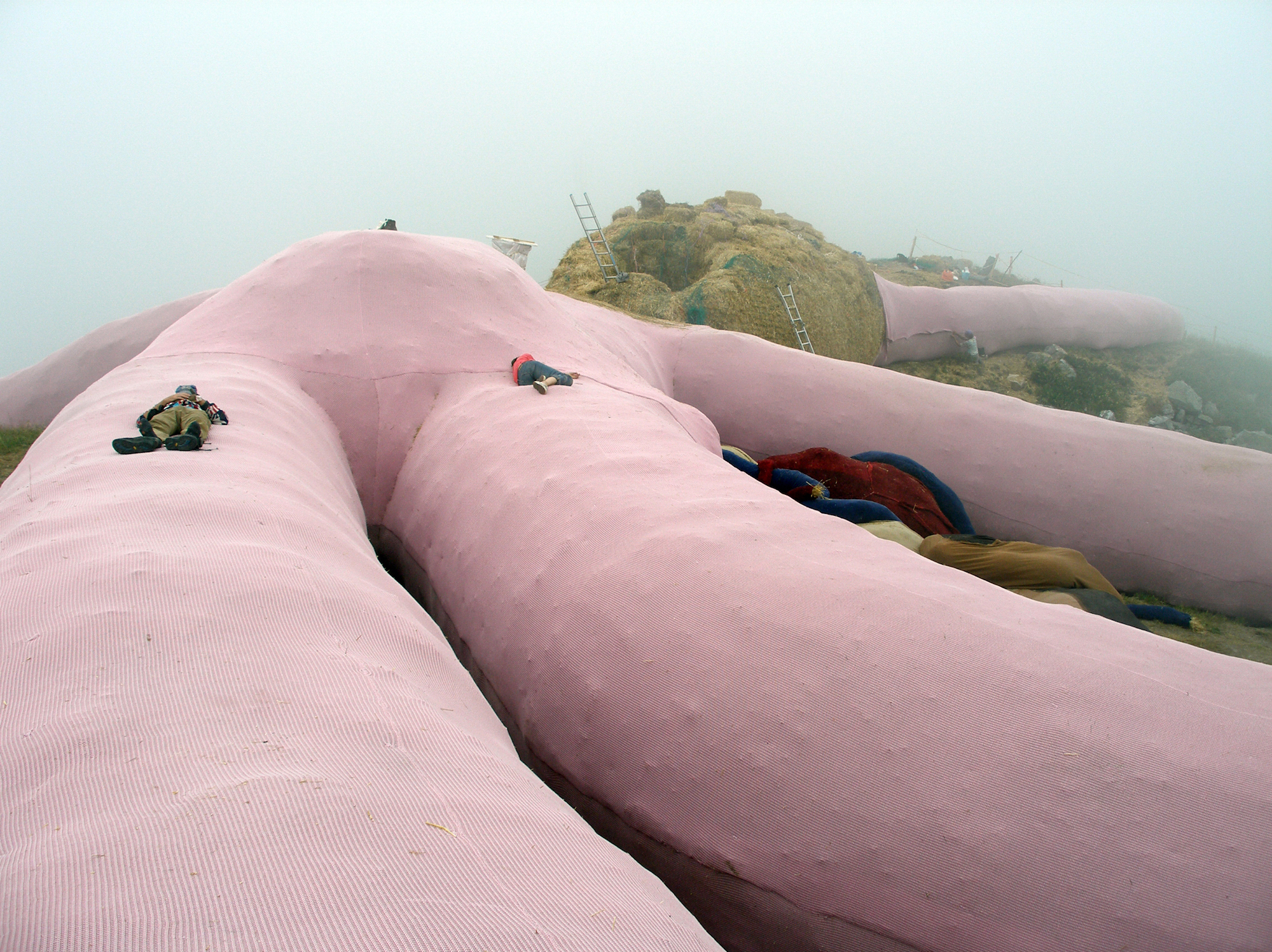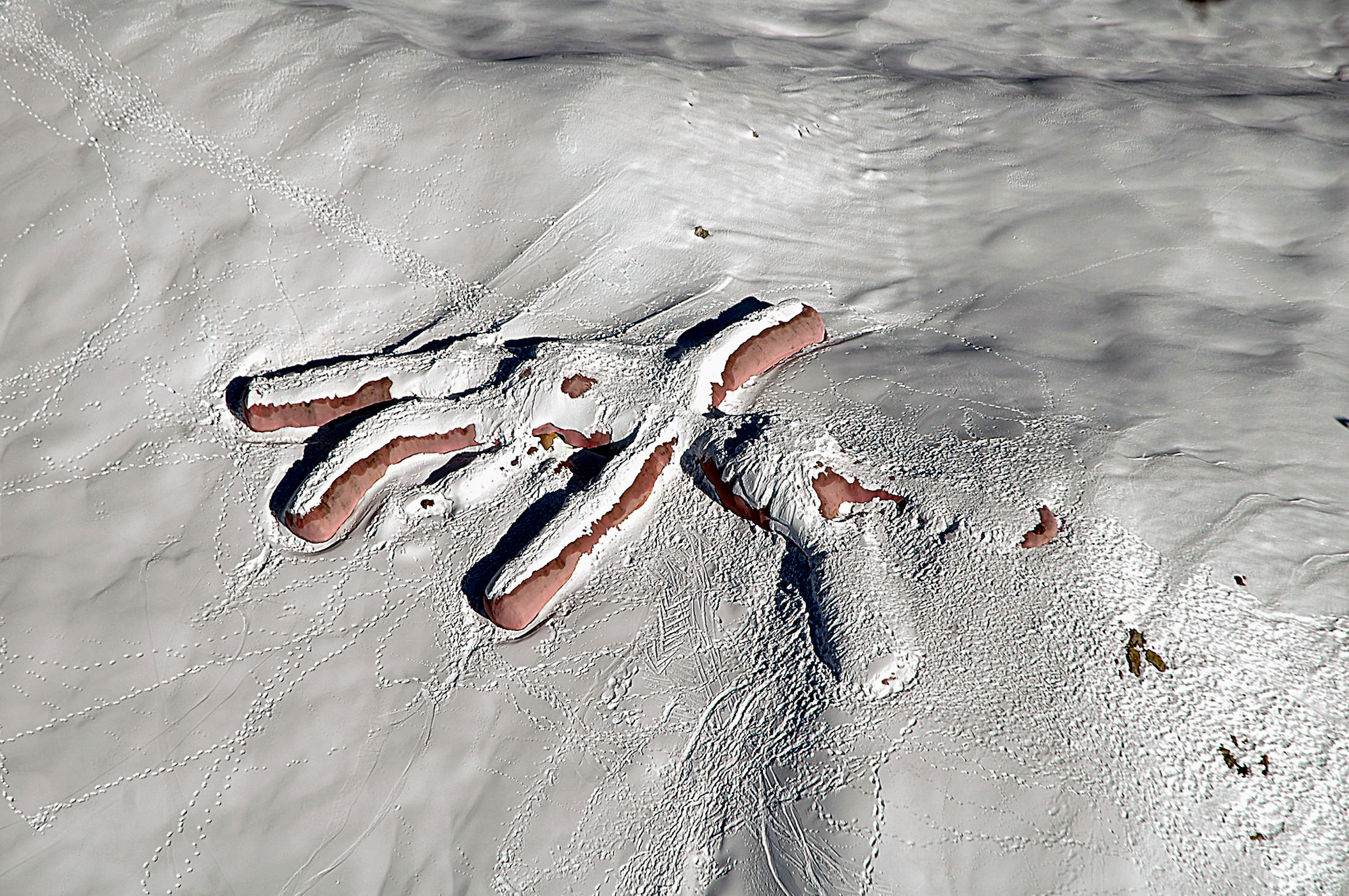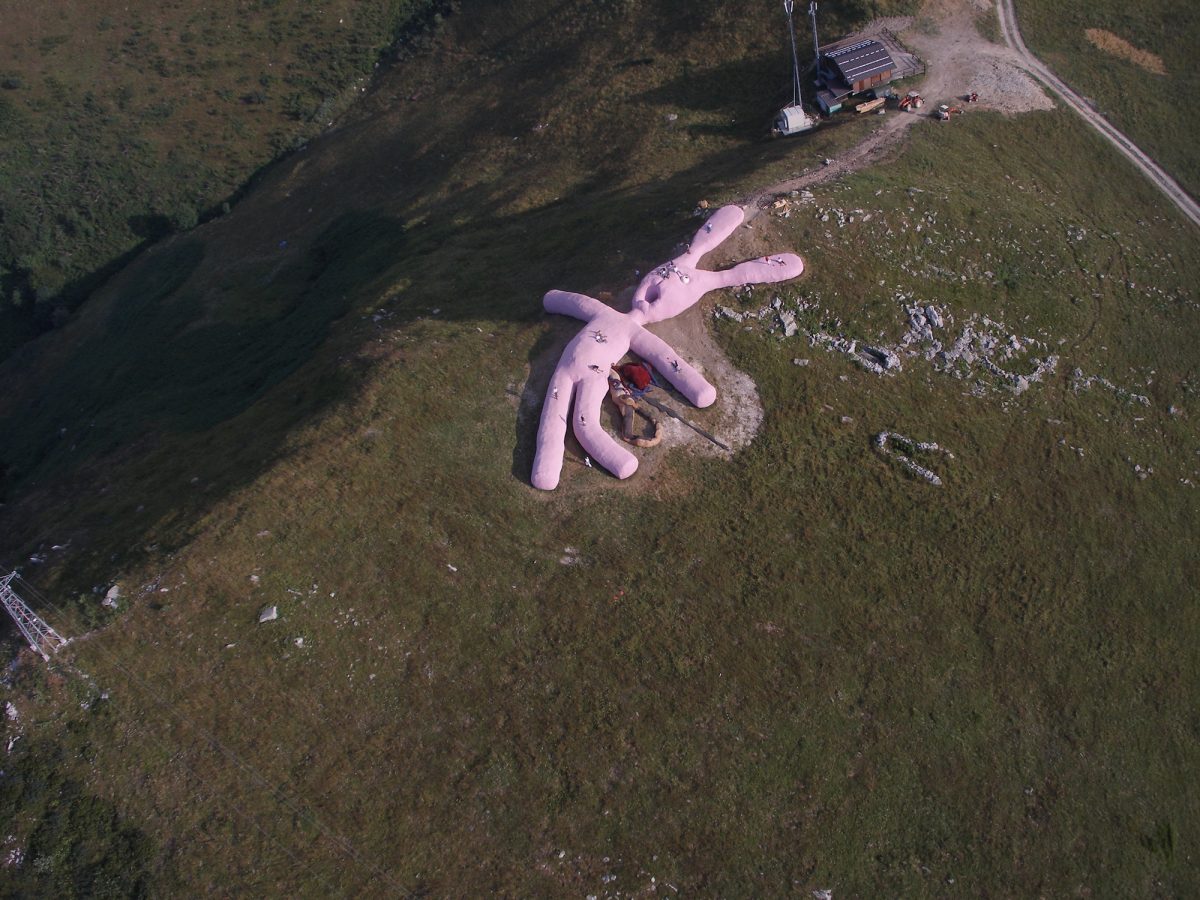
Gelitin’s best-known work is loud, sweaty, and scatological, prankish performances that highlight the absurdity of the human body and the cultural-capitalist traditions that bind it. The Austrian collective (made up of Ali Janka, Florian Reither, Tobias Urban and Wolfgang Gantner) has created a gargantuan icicle from the pee of VIP art fair attendees (ferried straight from convention centre toilets) and constructed a massive, perspiring slide using mostly nude volunteers as building blocks. Visitors signed a waiver before sliding down the fleshy, damp conduit that resembled either a giant, spit-slicked oesophagus or gooey vaginal canal, a communal rebirth of carnival-ride proportions.
These carnal hijinks almost always provoke a powerful reaction. Sometimes this registers as awkward laughs. At other times it’s unhinged joy, full-on body shivers, or heart-tingling nostalgia. But it’s actually one of Gelitin’s less overtly shocking pieces (a very large, but also very quiet, slowly decaying stuffed bunny) that has perhaps the longest lasting effect.

“In Gelitin’s worldview, detritus, defecation, and decay aren’t sheepishly concealed. Instead, they’re quite literally put on pedestals”
Dubbed simply Hase/Rabbit/Coniglio, the sculpture touched down on a swathe of the Italian Alps in 2005. At 200-feet long and 20-feet high, its floppy, bubblegum-pink form spilled across a mountain pass, towering over resident goats, occasional passersby, and Gelitin fans making the pilgrimage to see, prod, and picnic on the bunny’s sloping surfaces. At first glance, it looked like a giant facsimile of a garden-variety stuffie, the kind that kids love so hard and snot on so profusely that fur congeals and button eyes pop off. More unexpectedly, an engorged red heart and knotty blue entrails slopped from the side of its body. While the stuffed animal was certainly well-loved and well-worn, it was also straight-up dead and in the early stages of atrophy.
The work was released into the world on a sweet myth and a fatalistic promise. Gelitin claimed that Italian grannies had spent five years knitting the rabbit’s woollen skin, which was subsequently stuffed with hay and laid to rest. There it would remain until 2025 or its total decomposition, whichever came first. “Its decay was programmed into the rabbit from its conception, it was essentially born a corpse,” art historian Monte Packham wrote in a 2006 meditation on the piece in Sleek. “In spite of this, it received unconditional affection, or maybe just because of this: love also heals all wounds.”
In Gelitin’s unique worldview, detritus, defecation, and decay aren’t mourned or sheepishly concealed. Instead, they’re quite literally put on pedestals and praised as agents of transformation, regeneration, and love so strong it might just become the panacea we’ve all been searching for. Nowhere is this more clear than in Hase. “Happy you feel as you climb up along its ears, almost falling into its cavernous mouth,” Gelitin wrote of the piece, their words doubling as a lightly suggestive visitor’s guide. “Happily in love you step down the decaying corpse, through the wound, now small like a maggot, over woollen kidney and bowel.”
“At 200-feet long and 20-feet high, its floppy, bubblegum-pink form spilled across a mountain pass”
While the work’s organic, increasingly smelly, secreting curves might represent decaying flesh and disemboweled intestines, they are also warm, soft forms to rest on, nestle into, and take refuge in. It’s a less orgiastic but arguably more memorable version of the visceral, uneasy dichotomies Gelitin deals in, which art historians Kate Fowle and Lars Bang Larsen have accurately described as striking “a fine line between the opposing responses they elicit—pleasure and pain, inspired dreaming and futility, like and loathing—a tension that is integral to the experimentation in their process.”

In its early years, visitors used Hase as a surreal, silly picnic site, nap spot, and even ski jump, while scholars and artheads meditated on its participatory nature, anti-capitalist undertones, and environmental messages. “A sculpture that looks disgusting and smells bad invites people to frolic as they acknowledge that decay means life-affirming renewal,” scholar Linda Weintraub asserted in her 2006 book ECOcentric Topics: Pioneering Themes for Eco-Art. “[Such] impudent means serve an earnest environmental goal, to assert the role of human attitudes in setting our planet’s course.”
Over time, flora and fauna indeed adopted Hase’s carcass as a host and rough winters degraded its knubbly surface, making room for nests and fast-growing weeds fertilised by its straw innards. These days, it’s merely a grey outline of its original pepto-bismol hued body, viewable through a Google Maps’ satellite search as a sweet, somewhat unsettling ghost (the kind that gets your existential thoughts churning).

“While the work’s curves might represent decaying flesh, they are also warm, soft forms to rest on, nestle into, and take refuge in”
In a 2008 profile by Mark Sanders in Another Magazine, the writer touched on Gelitin’s ability to magic human waste into a joyful collective experience: “The waste products associated with the body are to be seen as something positive. They represent that discarded part of ourselves that can be reincorporated back into their art, often in a collective manner that transforms their work into a cooperative statement.”
While Hase wasn’t constructed from shit or perspiring bodies, it certainly invited the participation of humans and the messy, gorgeous world we inhabit, where decay and play become salvos fertilising something new, weird, regenerative, and deeply, searingly, cooperative.
All images courtesy the artists








